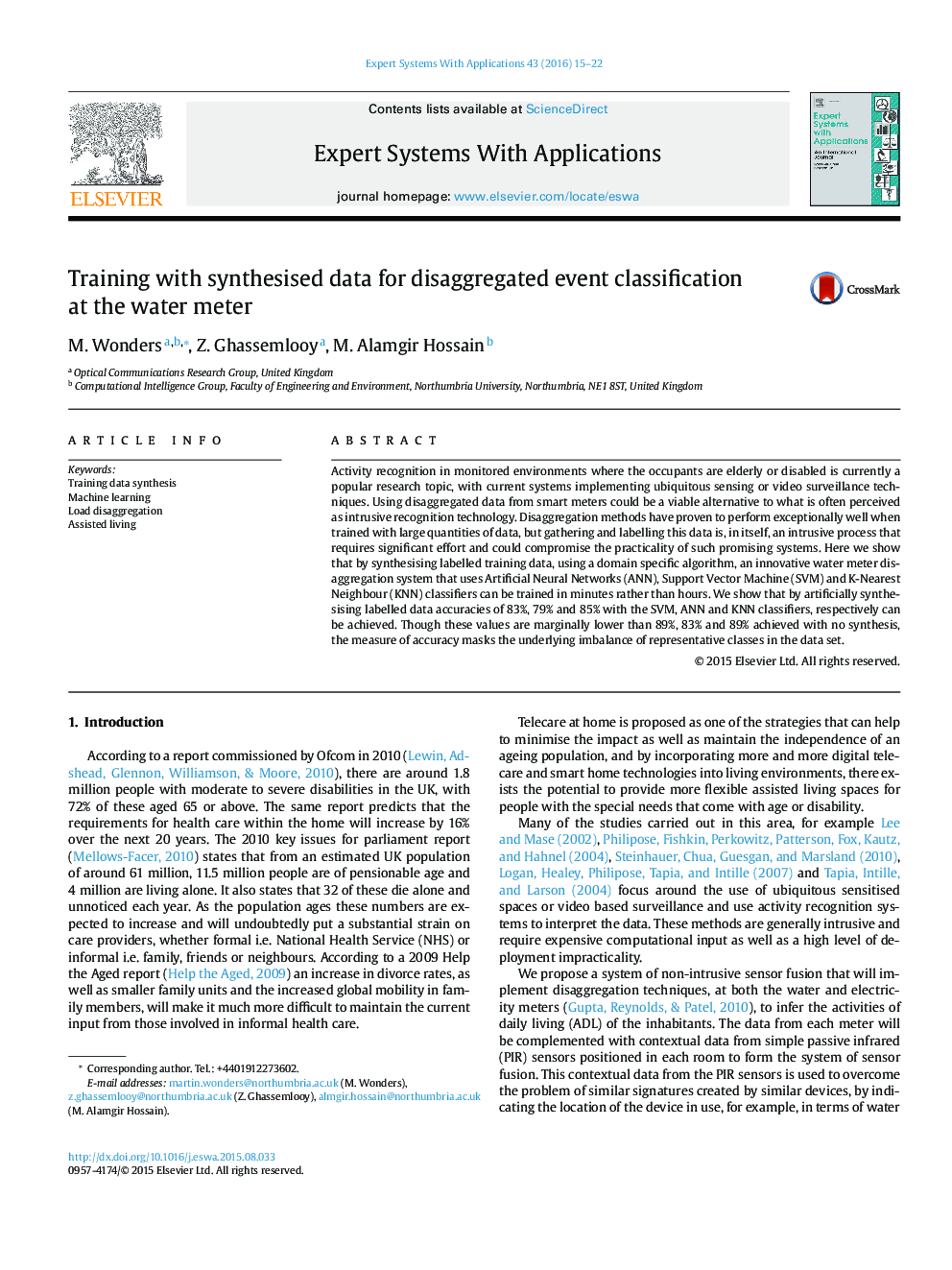| Article ID | Journal | Published Year | Pages | File Type |
|---|---|---|---|---|
| 382633 | Expert Systems with Applications | 2016 | 8 Pages |
•We compare SVM, ANN and KNN classifiers for water meter dissagregation.•We compare classifiers trained with collected data against synthesised data.•Training classifiers with synthesised data can improve classification.•Using synthesised data can reduce configuration time for dissagregation techniques.
Activity recognition in monitored environments where the occupants are elderly or disabled is currently a popular research topic, with current systems implementing ubiquitous sensing or video surveillance techniques. Using disaggregated data from smart meters could be a viable alternative to what is often perceived as intrusive recognition technology. Disaggregation methods have proven to perform exceptionally well when trained with large quantities of data, but gathering and labelling this data is, in itself, an intrusive process that requires significant effort and could compromise the practicality of such promising systems. Here we show that by synthesising labelled training data, using a domain specific algorithm, an innovative water meter disaggregation system that uses Artificial Neural Networks (ANN), Support Vector Machine (SVM) and K-Nearest Neighbour (KNN) classifiers can be trained in minutes rather than hours. We show that by artificially synthesising labelled data accuracies of 83%, 79% and 85% with the SVM, ANN and KNN classifiers, respectively can be achieved. Though these values are marginally lower than 89%, 83% and 89% achieved with no synthesis, the measure of accuracy masks the underlying imbalance of representative classes in the data set.
